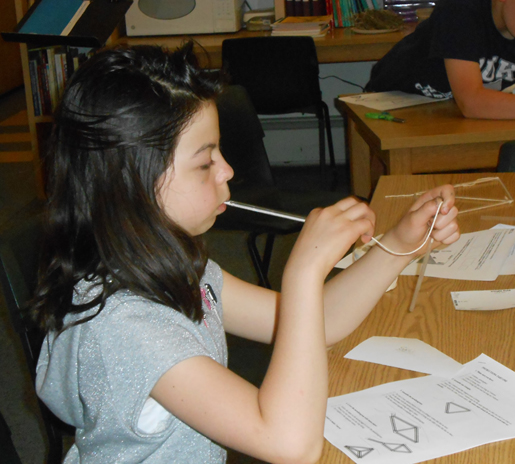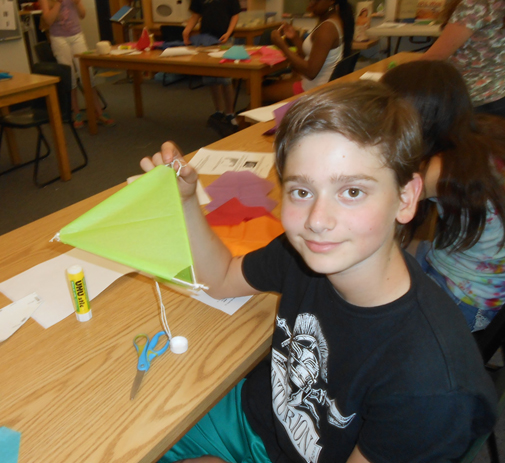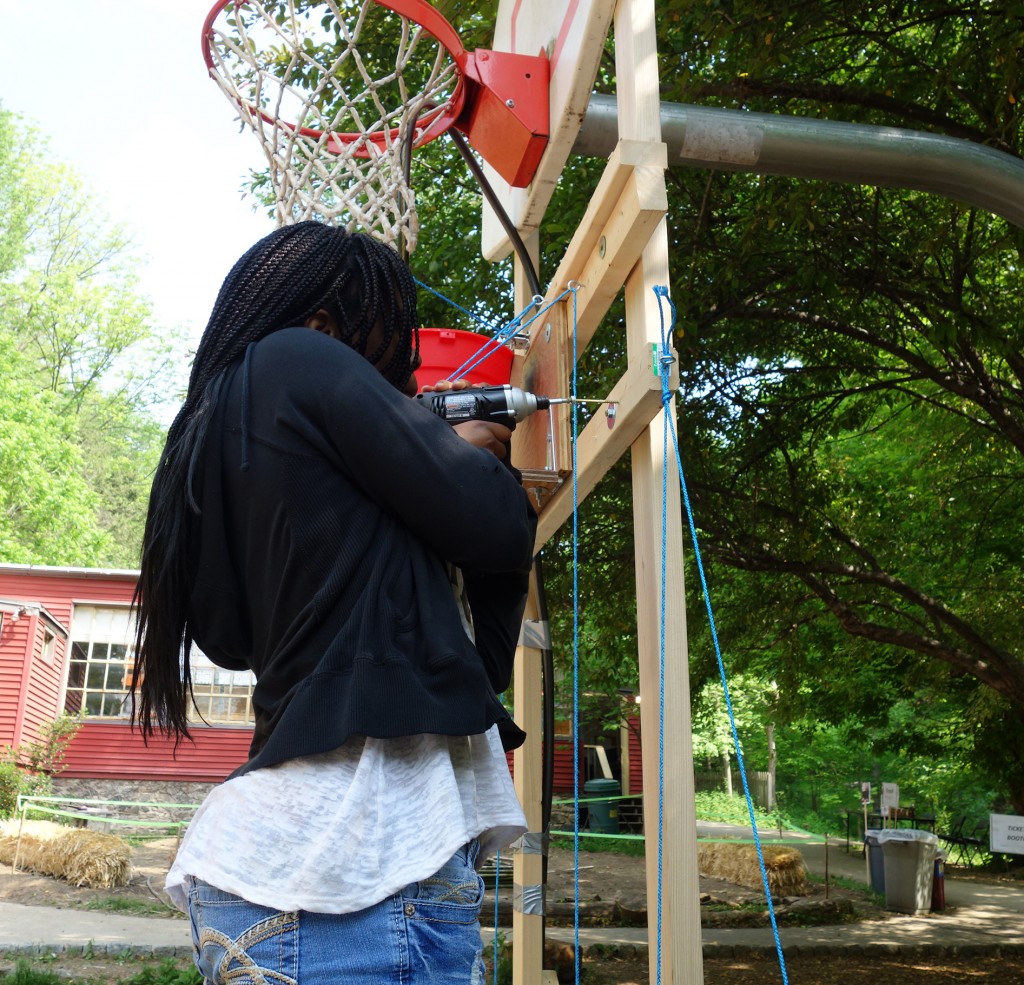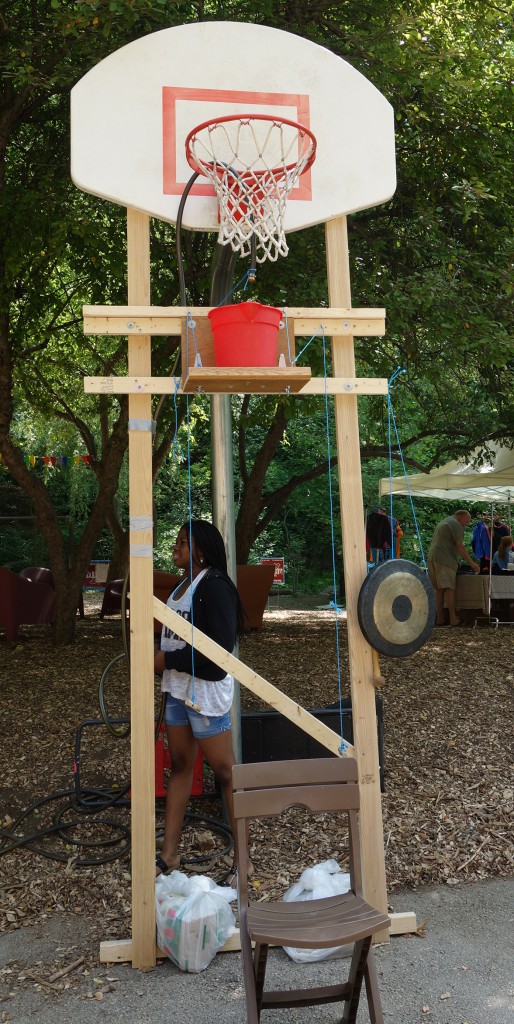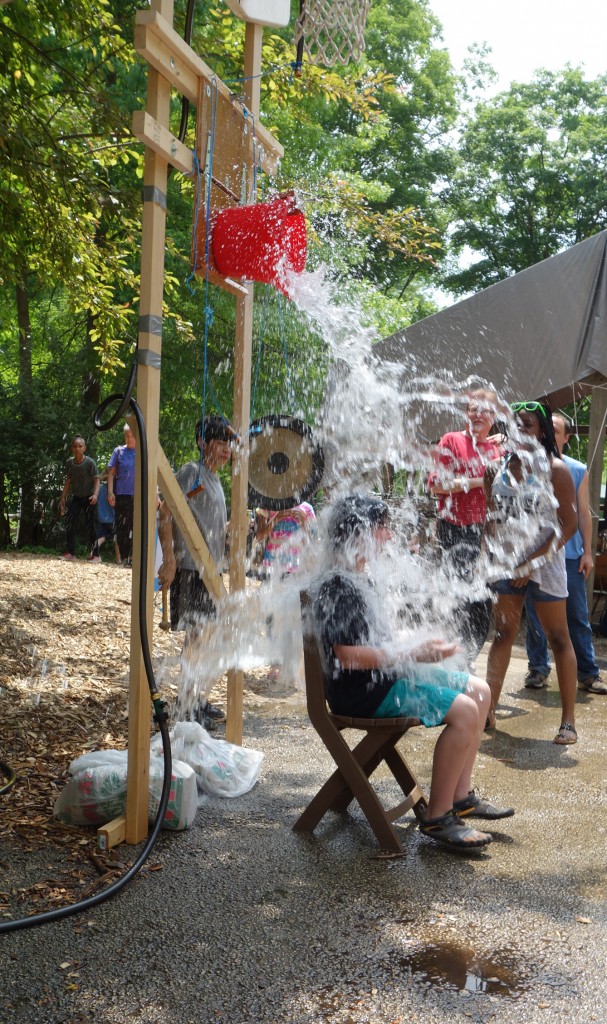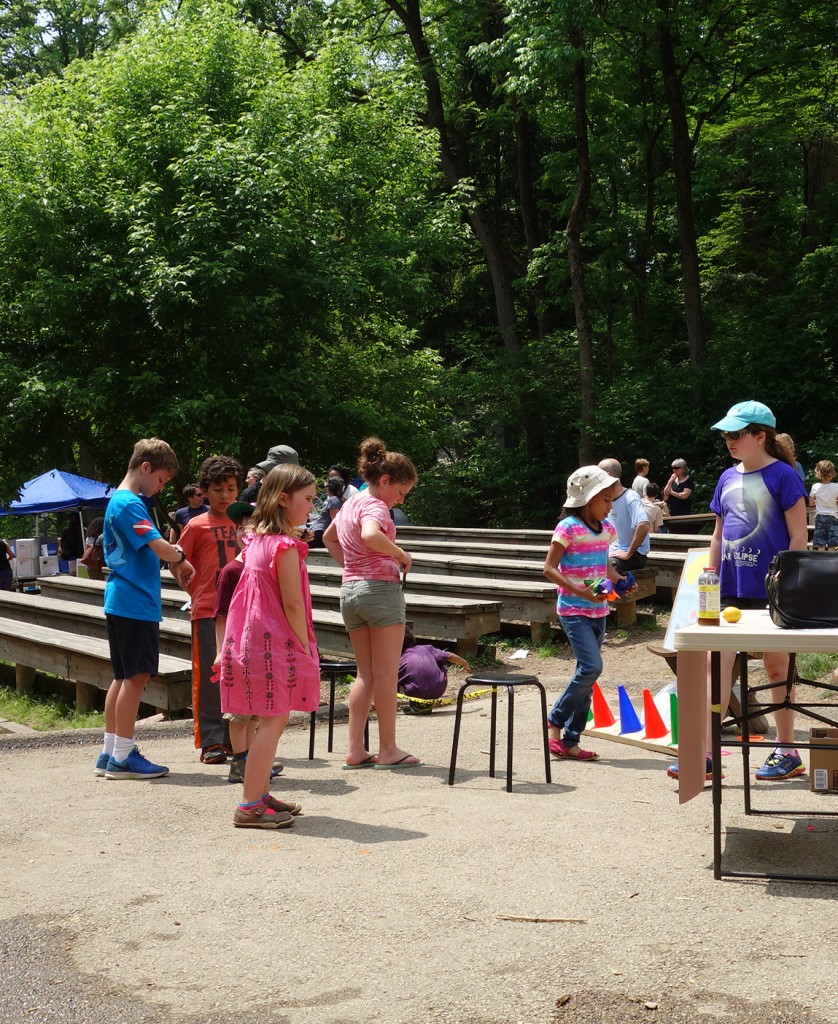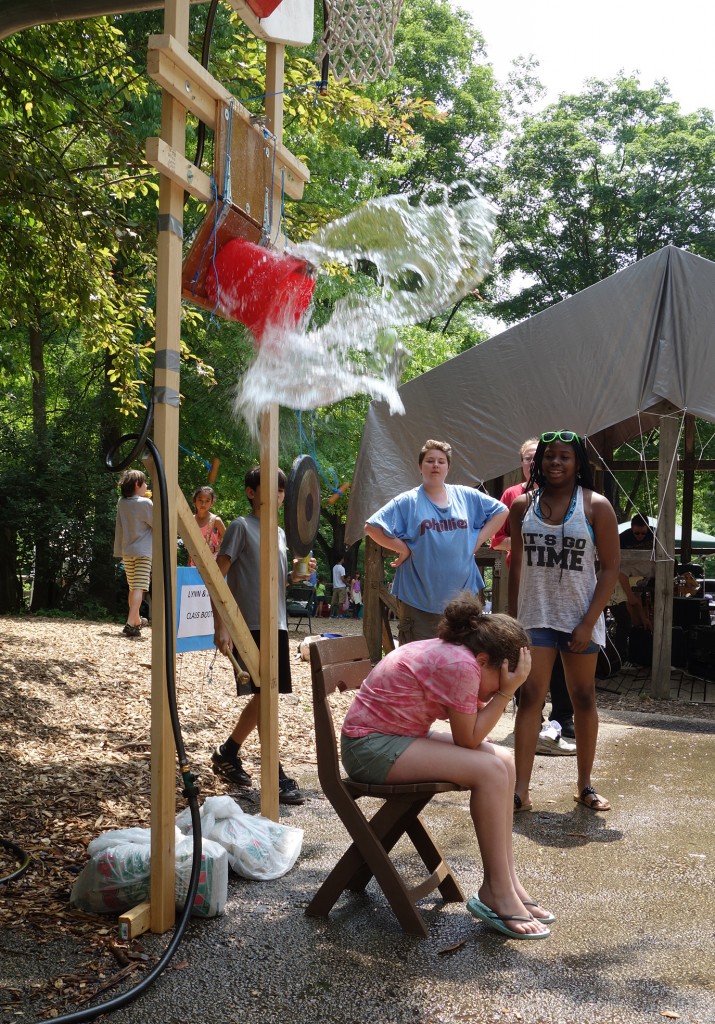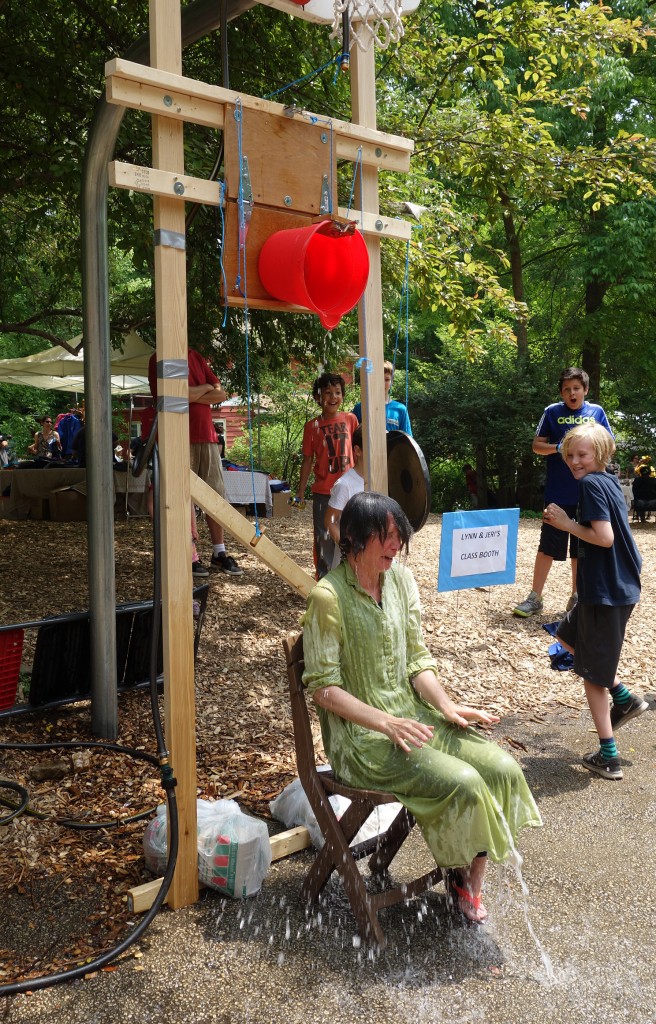GETTYSBURG:
We started the week with our long-awaited trip to Gettysburg. See the previous post for more photos.
We took advantage of the small size of our class to hire 4 battlefield guides, one for each car. These independent experts know a tremendous amount about the details of the battle. It’s much better than the recorded car tour because they can answer questions. In addition, their own strong interest in this piece of history comes through strongly for the students (and their teachers!).
After the car tour, we managed a quick lunch and then met up with the park ranger, who led us through a hands-on tour of the Slyder family farm. We had prepared for this in the classroom by getting to know the family a bit (two parents, three children at home, two other adult children living in or near the town) and also looked at a map of their farm with its house and outbuildings. We discussed the decision they had to make: with fighting already started nearby, should they stay or leave? If they leave, they will need to leave behind most of their possessions and animals. If they stay, they risk being hurt or killed, and they still are likely to lose their animals and stored food. Our group decided unanimously to leave, and the Slyders actually did the same. They returned to find extensive damage and loss, as well as several graves of dead soldiers. Despite having built and lived on the property for 10 years, they moved to Ohio and started over again. We wanted our students to understand that there was a civilian cost to war (then and now), and we reminded them that most of the fighting took place in the South.
We ended our day there with an exploration of the exhibits in the recently-rebuilt Visitor Center. There are interactive displays, lots of archival photographs, and many other things to bring us closer to why this war happened and what it was like to live through this time as a soldier, nurse, doctor, and civilian. The bookstore/shop was a constantly-beckoning attraction, and we did give kids time to visit it and be parted from their money.
For children and parents who are interested, a return trip during the summer would be a wonderful experience for everyone. We didn’t see everything at all — and the Cylcorama (as Oliver’s father mentioned) is one of the features that you should consider visiting. In addition, if you have one more seat in your car, we encourage you to book one of the battlefield guides. It adds a depth of expertise to the trip that cannot be replicated any other way.
Our thanks go to the parents who came with us (as well as all of you who got up before dawn to get your children to school and were still awake to take them home again).
TETRAHEDRAL KITES:
Sometime in the fall, I rashly said to one of the math groups I was teaching that we would build tetrahedral kites. When? Not sure, but before the year ends. Well, the year is on the brink of ending, and promises must be kept. Taking advantage of a brief disruption of our regular math instruction while Jeri enjoys/celebrates/revels in her younger son’s graduation from college, Diane and I got started on Friday and will finish the project on Monday next week. Jeri will be back and “regular” math will resume on Tuesday. (Then Diane and Jeri will go off on their NYC trip Wednesday and Thursday, and it will all be new and different again . . . but always educational!)
Helpful definition: a tetrahedron is a kind of pyramid. It’s made from 4 triangles, one as the base and the other 3 as sides. (Tetra is the Greek word for 4, and hedron means side or surface.) So the kites are made from straws, tissue paper, and string. It takes 4 tetrahedrons to make a basic kite, and bigger kites can be made by joining multiple basic structures. There is a plan similar to the one we are using at the NCTM Illuminations site: http://illuminations.nctm.org/Lesson.aspx?id=2121 .
So here are some photos from the first day of construction, thanks to Diane. The big challenges for our many of students were reading and following the directions carefully, learning to tie a double knot, cutting string with scissors (pull it tight over the blade before cutting), and accepting that the easiest way to get a soft string into a straw is to suck it through while trying not to swallow the string entirely.
THE SPRING FAIR
This is always a lot of fun as well as Educational. When the fair organizers looked for a group to do a “dunk bucket” activity, I checked with our kids and then cheerfully volunteered. Although there wasn’t time for us to do all of the designing and problem-solving in the classroom, I brought an incomplete prototype to school, and students finished working out the kinks. With the help of Jonah’s dad and Eileen Flynn, we got the uprights secured on the basketball back near the playbarn on Thursday. Students used power tools to put the rest of it together on Friday, figured out the right distance for The Chair, and also created a wonderful combination ring-toss and bean bag game that was the activity that triggered the dumping of the bucket.
We had only 11 students to run the booth on the day of the fair, but they did heroically. And, of course, we thank Emily Carner and Katrina Trudeau-Williams for being the adult presence at our booth for the many hot, sunny hours of the day. We also thank everyone who was willing to be a recipient of the bucket deluge — cold and sudden, preceded by the tolling of the gong . . .
It was a full, busy, and extended week. Thanks to everyone who made it such a good one!



